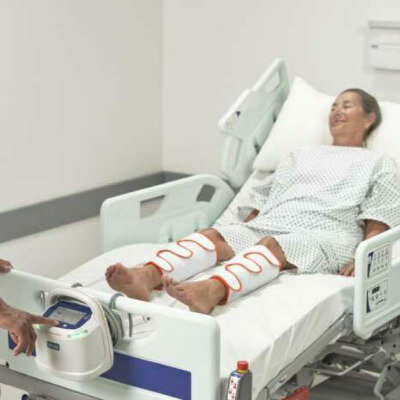Sterile Urine Notion Shown to Be a Myth
|
By HospiMedica International staff writers Posted on 13 Apr 2015 |
A new study has discredited the common belief that normal human urine is sterile.
Researchers at Loyola University (Chicago, IL, USA) evaluated urine specimens from 90 healthy women, collected directly from the bladder through aspiration or a catheter to avoid skin contamination. The specimens were analyzed using an expanded quantitative urine culture (EQUC) technique that can identify bacteria not detectable by standard urine culture techniques that are used to diagnose urinary tract syndromes. The study also used 16S rDNA sequencing to classify bacterial DNA.
The researchers found that bladder bacteria in healthy women differ from the bladder bacteria in those affected by an overactive bladder (OAB), and contribute to symptoms of urinary incontinence. The presence of bacteria could also correlate with other common lower urinary tract disorders, such as urinary tract infections and painful bladder syndromes. The results also revealed that some bacteria are more common in women with urgency urinary incontinence than in healthy women. The study was published in the March 2015 issue of European Urology.
“Clinicians previously equated the presence of bacteria in urine to infections. The discovery of bacteria in the urine of healthy females provides an opportunity to advance our understanding of bladder health and disease,” said lead author Prof. Alan Wolfe, PhD, of the department of microbiology and immunology. “Physicians and researchers must reassess their assumptions surrounding the cause of lower urinary tract disorders and consider new approaches to prevent and treat these debilitating health issues.”
It is commonly believed that urine is sterile until it reaches the urethra, where epithelial cells lining the urethra are colonized by facultatively anaerobic Gram negative rods and cocci. Using EQUC, the researchers identified 35 different genera and 85 different species, with the most prevalent genera isolated being Lactobacillus (15%), followed by Corynebacterium (14.2%), Streptococcus (11.9%), Actinomyces (6.9%), and Staphylococcus (6.9%). Other genera isolated include Aerococcus, Gardnerella, Bifidobacterium, and Actinobaculum.
Related Links:
Loyola University
Researchers at Loyola University (Chicago, IL, USA) evaluated urine specimens from 90 healthy women, collected directly from the bladder through aspiration or a catheter to avoid skin contamination. The specimens were analyzed using an expanded quantitative urine culture (EQUC) technique that can identify bacteria not detectable by standard urine culture techniques that are used to diagnose urinary tract syndromes. The study also used 16S rDNA sequencing to classify bacterial DNA.
The researchers found that bladder bacteria in healthy women differ from the bladder bacteria in those affected by an overactive bladder (OAB), and contribute to symptoms of urinary incontinence. The presence of bacteria could also correlate with other common lower urinary tract disorders, such as urinary tract infections and painful bladder syndromes. The results also revealed that some bacteria are more common in women with urgency urinary incontinence than in healthy women. The study was published in the March 2015 issue of European Urology.
“Clinicians previously equated the presence of bacteria in urine to infections. The discovery of bacteria in the urine of healthy females provides an opportunity to advance our understanding of bladder health and disease,” said lead author Prof. Alan Wolfe, PhD, of the department of microbiology and immunology. “Physicians and researchers must reassess their assumptions surrounding the cause of lower urinary tract disorders and consider new approaches to prevent and treat these debilitating health issues.”
It is commonly believed that urine is sterile until it reaches the urethra, where epithelial cells lining the urethra are colonized by facultatively anaerobic Gram negative rods and cocci. Using EQUC, the researchers identified 35 different genera and 85 different species, with the most prevalent genera isolated being Lactobacillus (15%), followed by Corynebacterium (14.2%), Streptococcus (11.9%), Actinomyces (6.9%), and Staphylococcus (6.9%). Other genera isolated include Aerococcus, Gardnerella, Bifidobacterium, and Actinobaculum.
Related Links:
Loyola University
Latest Critical Care News
- Soft Robots Could Donate Their Heart to Humans
- Bioadhesive Strategy Prevents Fibrosis Around Device Implants on Peripheral Nerves
- Miniature Non-Invasive Robotic Catheters to Improve Infertility Treatments
- Stick-On Patch Monitors Baby's Movements In Utero
- EEG-Based AI Technology Accurately Diagnoses Alzheimer’s and Dementia
- Robot Lymphatic System Paves Way for Self-Powered Wearables and Machines
- Focused Ultrasound Technique Successfully Treats Pediatric Brain Cancer
- Nasal Drops Fight Brain Tumors Noninvasively
- AI Helps Optimize Therapy Selection and Dosing for Septic Shock
- Glowing Bacteria ‘Pills’ for Detecting Gut Diseases Could Eliminate Colonoscopies
- Skin-Permeable Polymer Patch Delivers Insulin Non-Invasively Through Skin
- Nanogel Technology Almost 100% Effective in Destroying Drug-Resistant Bacteria Within Hours
- Wearable Ultrasound Sensor Delivers Noninvasive Treatment Without Surgery
- Gel-Free ECG System to Transform Heart Health Diagnosis
- Biodegradable Patch Repairs Damaged Tissue After Heart Attack
- Magnetically Guided Microrobots to Enable Targeted Drug Delivery

Channels
Surgical Techniques
view channel
Minimally Invasive Surgery Proven Safe and Effective for Complex ‘Whipple’ Procedure
Tumors of the pancreatic head often require a highly complex operation known as pancreatoduodenectomy or the Whipple procedure. This surgery involves removing multiple structures and creating several internal... Read more
Catheter-Based Procedures Offer Less Invasive Option for Treatment of Valvular Disease
Valvular heart disease, caused by tight or leaky valves between heart chambers, affects up to 10% of older adults and leads to more than 120,000 deaths globally each year. Traditional open-heart surgery... Read morePatient Care
view channel
Revolutionary Automatic IV-Line Flushing Device to Enhance Infusion Care
More than 80% of in-hospital patients receive intravenous (IV) therapy. Every dose of IV medicine delivered in a small volume (<250 mL) infusion bag should be followed by subsequent flushing to ensure... Read more
VR Training Tool Combats Contamination of Portable Medical Equipment
Healthcare-associated infections (HAIs) impact one in every 31 patients, cause nearly 100,000 deaths each year, and cost USD 28.4 billion in direct medical expenses. Notably, up to 75% of these infections... Read more
Portable Biosensor Platform to Reduce Hospital-Acquired Infections
Approximately 4 million patients in the European Union acquire healthcare-associated infections (HAIs) or nosocomial infections each year, with around 37,000 deaths directly resulting from these infections,... Read moreFirst-Of-Its-Kind Portable Germicidal Light Technology Disinfects High-Touch Clinical Surfaces in Seconds
Reducing healthcare-acquired infections (HAIs) remains a pressing issue within global healthcare systems. In the United States alone, 1.7 million patients contract HAIs annually, leading to approximately... Read moreHealth IT
view channel
EMR-Based Tool Predicts Graft Failure After Kidney Transplant
Kidney transplantation offers patients with end-stage kidney disease longer survival and better quality of life than dialysis, yet graft failure remains a major challenge. Although a successful transplant... Read more
Printable Molecule-Selective Nanoparticles Enable Mass Production of Wearable Biosensors
The future of medicine is likely to focus on the personalization of healthcare—understanding exactly what an individual requires and delivering the appropriate combination of nutrients, metabolites, and... Read moreBusiness
view channel
Philips and Masimo Partner to Advance Patient Monitoring Measurement Technologies
Royal Philips (Amsterdam, Netherlands) and Masimo (Irvine, California, USA) have renewed their multi-year strategic collaboration, combining Philips’ expertise in patient monitoring with Masimo’s noninvasive... Read more
B. Braun Acquires Digital Microsurgery Company True Digital Surgery
The high-end microsurgery market in neurosurgery, spine, and ENT is undergoing a significant transformation. Traditional analog microscopes are giving way to digital exoscopes, which provide improved visualization,... Read more
CMEF 2025 to Promote Holistic and High-Quality Development of Medical and Health Industry
The 92nd China International Medical Equipment Fair (CMEF 2025) Autumn Exhibition is scheduled to be held from September 26 to 29 at the China Import and Export Fair Complex (Canton Fair Complex) in Guangzhou.... Read more













